
From the early antiques to modern hypercars, the 72nd Pebble Beach Concours created a mosaic of automotive gems that brought history to the present. This year's event celebrated the Mercedes-Benz S, SS, and SSK, the creations of Joseph Figoni, American Dream Cars of the 1950s cars of Pegaso, and Vanderbilt Cup racers. Significant anniversaries for Porsche, Lamborghini and McLaren were recognized (both 60th Anniversary), with the latter two not even existing when the first Pebble Beach Concours was held back in 1950.
Mercedes-Benz S, SS, and SSK
The supercharged S (Sport) type was the engineering brilliance of Ferdinand Porsche with a 6.8-liter high-performance engine. Derived from the 630, which had a six-cylinder 6.3-liter engine, the S-Type saw the chassis lowered, displacement increased, and the engine moved rearward, improving the vehicle's balance and handling. The S-Type led to the SS and SSK (Super Sport Kurz) models used as factory team race cars. In 1929, the SSK was the fastest road car in the world, capable of over 130 mph.
Pebble Beach honored the S, SS, and SSK with prime real estate on the 18th fairway of Pebble Beach Golf Links overlooking the ocean. Nearly two dozen S, SS, and SSK cars rested fender-to-fender with diverse coachwork from some distinguished carrozzerias such as Glaser, Murphy, Saoutchik, Barker, Gangloff, and Cadogan.
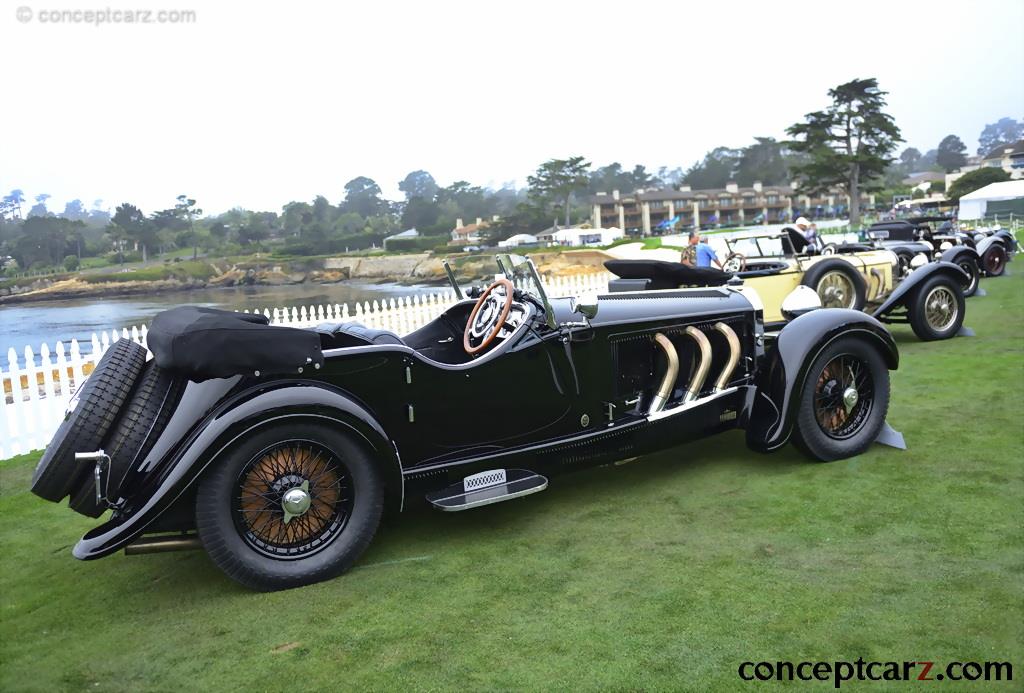
The class winner in the Mercedes-Benz S category was the 1928 Mercedes-Benz 680 S Glaser Sports Tourer owned by John Bentley, Harrogate, United Kingdom. Debuting in 1927, the Mercedes 'S' was an enhanced descendant of the already famous 'K' of two years prior. Both were designed by Dr. Ferdinand Porsche, Mercedes' chief engineer at the time. The 'S' was definitely a sporting chassis with a low center of gravity designed for spirited and competitive driving. In 1927 alone, the Type 'S' was responsible for 27 racing victories, while at the same time, breaking ten records.
The Pebble Beach class-winning 680S was assembled at the Mercedes-Benz factory in Stuttgart and then sent to H. Glaser-Karosserie in Dresden for a custom body in late May 1928. Styling elements include the helmet-style front fenders, cut-down doors, Veed windshield, wire wheels, copper-plated brake drums, and hood panels topped with twin rows of 57 louvers each.

The class winning car in the SS & SSK category was the 710 SS Special Roadster owned by the Auriga Collection in Germany. It wears one-off-coachwork created by the factory and was retained by Daimler-Benz for the first five years of its life, from 1930 to 1935. During that time, it was exhibited in 1933 at the Baden-Baden Concours d'Elegance, the most prestigious German event of the era, and won Das Goldene Band (Golden Ribbon), a testament to its design.
Pegaso
Pegaso, Spanish for Pegasus, is the winged divine stallion usually depicted as pure white on the Pegaso insignia. In the realm of mythology, the Pegasus' role was to deliver thunderbolts to Zeus. In the automotive world, the Pegaso had a similar effect, making a thunderous entrance when the Touring-bodied grand touring coupe made its debut at the 1953 Turin Auto Show. Engineered to perfection, the Z-102s Achilles' Heel was its rather conservative coachwork by ENASA (Empresa Nacional de Autocamiones S.A. / the in-house coachbuilder). Wilfredo Ricart, the head of Pegaso, commissioned Carrozzeria Touring of Milan, Italy, for something more exciting. Referencing a fighting bull for styling cues, Touring's chief designer Carlo Anderloni added a pair of air intakes on the hood 'reminiscent of the bull's flared nostrils' and windscreen supports 'shaped like its horns.' The resulting car was nicknamed the Tibidabo after a tall hill with a scenic vista overlooking Barcelona, and it was a stunningly beautiful contribution to the Pegaso stable.

Approximately 84 examples of the Z-102 were produced from 1951 to 1958, with this year's concours showcasing nine of the finest examples in existence. The most elegant and special Pegaso on Pebble Beach's lawn - per the judges - was the 1952 Pegaso Z-102 Tibidabo Touring Spyder owned by Daniel Sielecki of Punta del este, Uruguay. It is one of four Spyders built by Touring and the only one in its configuration. It was shown at the 1952 Paris Auto Salon, then dispatched to America for the 1953 New York Auto Show, returning to Spain in 1955, then passing through a limited number of caring hands before its current owner took possession in 2009.
Joseph Figoni Centennial
Pebble Beach honored the work of Joseph Figoni with two classes, one for cars produced during the years 1923 to 1937 and another for those built from 1938 to 1948. He founded his namesake carrosserie in 1923 and created custom coachwork until 1954. Bugatti, Alfa Romeo, and Delahaye were prominent clients of Figoni, with many of the examples shown at Pebble Beach from these automakers.
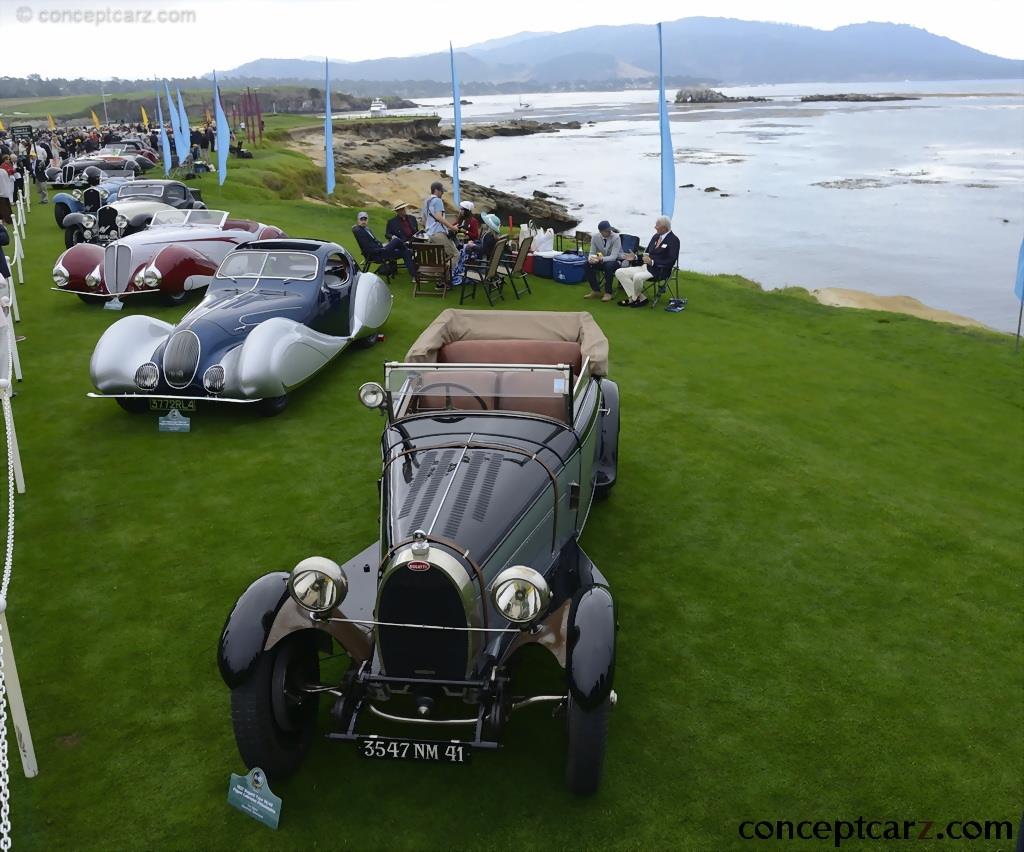
The earliest example was a 1927 Bugatti 38/49 with coachwork described by Figoni as 'Cabriolet Philadelphia' for reasons unknown. Several examples were built with this design, but the one on display was one of the few that have survived and possibly the best example in the world.

The most junior example of Figoni's work on display was the 1947 Delahaye 135 MS 'Narval (French for 'Narwhal') Cabriolet.' It was one of the most flamboyant designs from Figoni et Falaschi and its name was in reference to its prominent proboscis and vestigial fins, a full decade before Cadillac made fins famous. One of seven examples produced, the Delahaye was selected to be shown at the 1947 Paris Auto Salon, where it was bought by French singer-songwriter Charles Trenet. Recently restored, this dramatic Narval appears as it did in 1947.
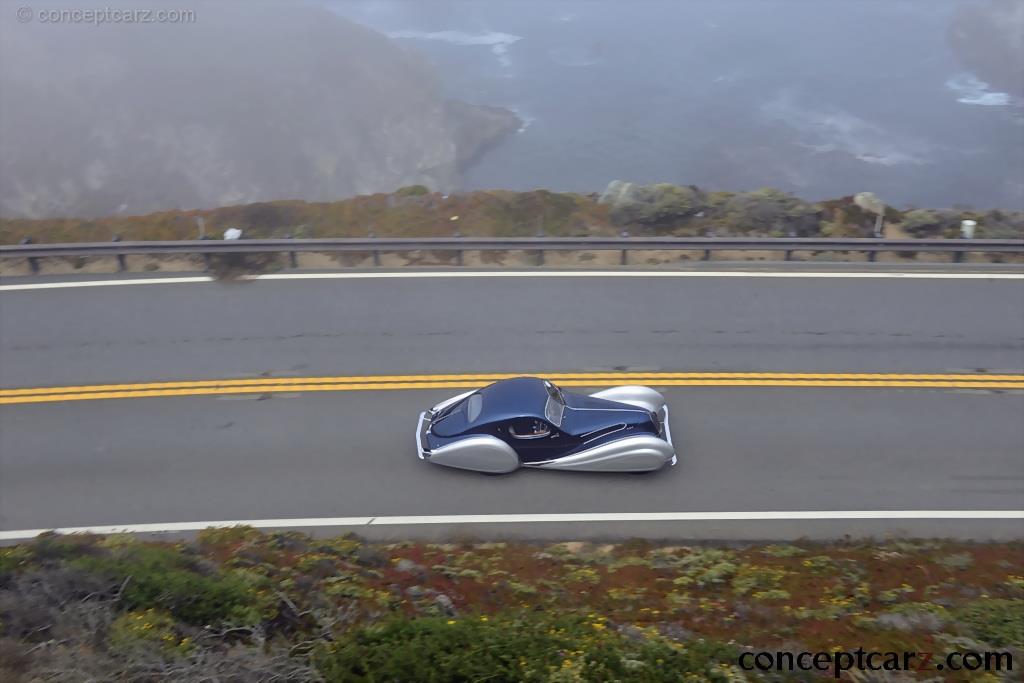
The judge's favorite in the 1923-1937 category was the 1937 Talbot-Lago T150 C-SS Figoni et Falaschi Teardrop Coupé owned by Lee R. Anderson Sr. of Naples, Florida. It is one of two examples constructed by Figoni with the iconic closed front fenders and the sole survivor with the original body. Entitled the 'Coupe Amerique,' it debuted at the 1937 New York Auto Show - the first time Figoni's 'teardrop' design had been seen Stateside. It won its class at the Pebble Beach Concours d'Elegance in 2005 and repeated this accomplishment in 2023.
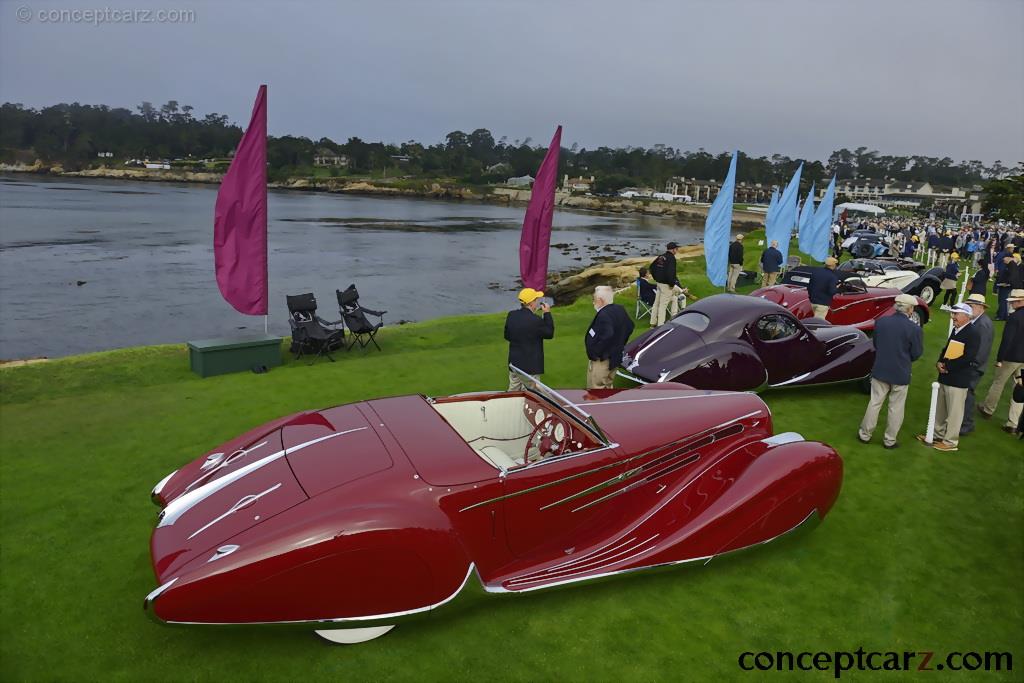
The class winner in the 1938 to 1948 Figoni class was the 1939 Delahaye 165 Figoni et Falaschi Cabriolet owned by the Peter Mullin Automotive Museum Foundation of Oxnard, California. One of two built, this V-12 Delahaye was chosen by the French Government to represent France at the 1939 New York World's Fair, where it caused a sensation.
Vanderbilt Cup Era Race Cars
The inaugural Vanderbilt Cup took place in Nassau County in 1904 and was America's first hosting of an international automobile racing event. Run over the public roads on Long Island, the early races were dominated by European cars.
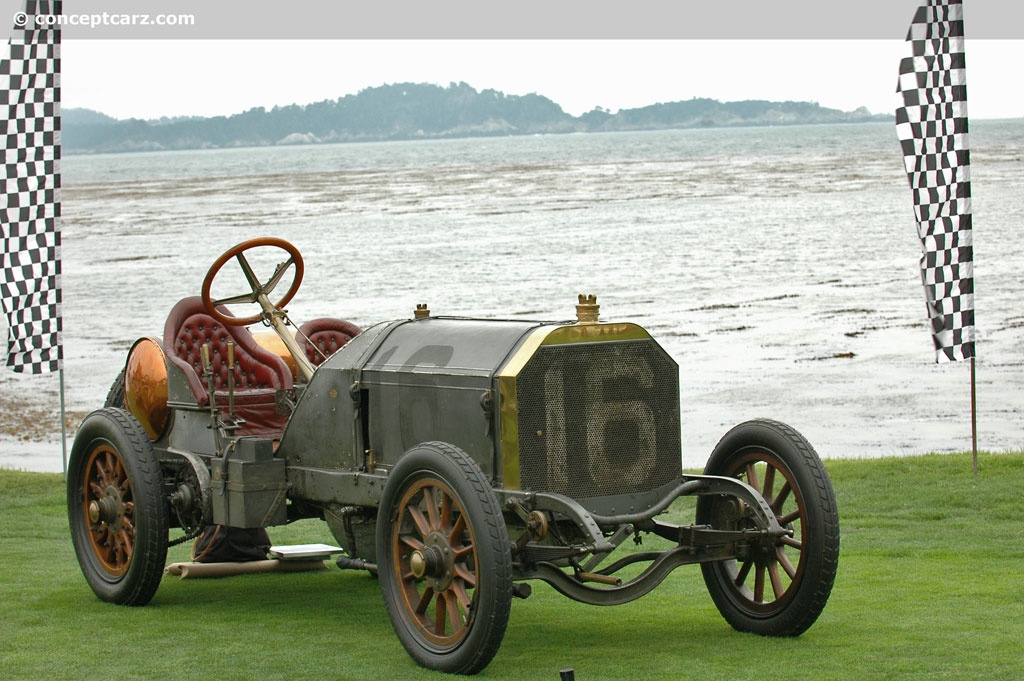
The 1906 Locomobile known as Old 16 was the first American automobile to win an international auto race. It raced in the 1906 event and was the fastest of the day, but eleven tire failures kept it from placing. The Vanderbilt was not run in 1907, but in 1908, Old 16 won the Cup, becoming the first American car to do so.
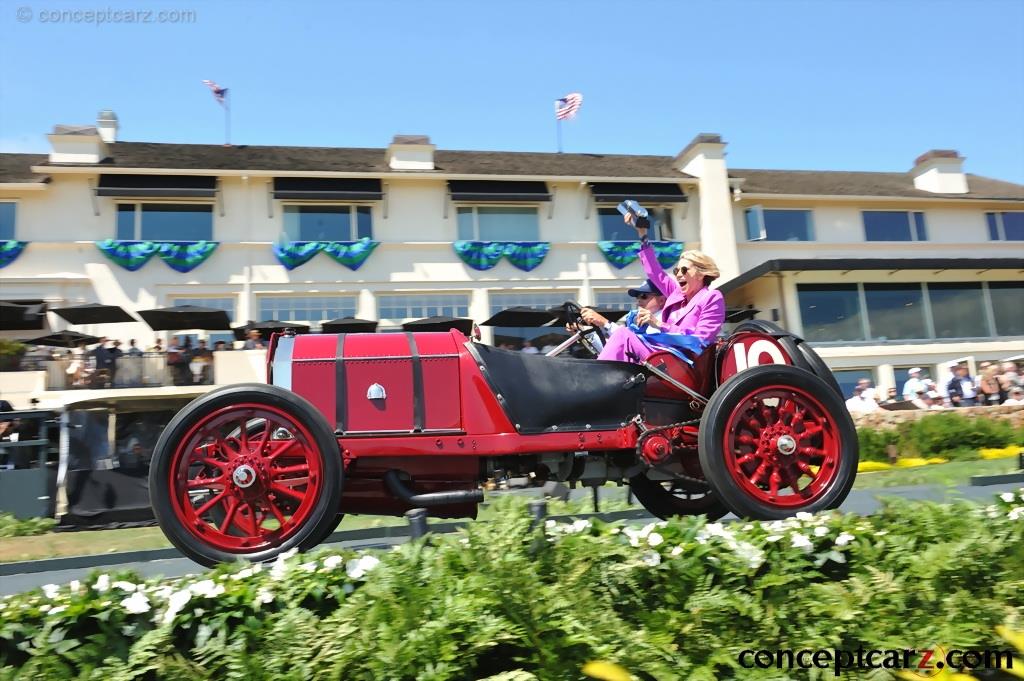
The Vanderbilt Cup Racer selected as Best in Class at Pebble Beach was the 1910 Fiat S61 that raced in the United States from 1911 until 1914. Equipped with a 10-liter, 4-cylinder, twin-plug engine, it could easily achieve over 100 mph. The car is currently finished in the livery it wore when it was driven by Ralph De Palma in the Grand Prix at Savannah.
American Dream Cars of the 1950s
The American Dream Cars of the 1950s class at Pebble Beach was an eclectic mix of bold and daring designs endowed with styling elements that were elegant and exotic. They were literally the personification of dreams, and often, practicality took a back seat to comfort and ingenuity.

The favorite from this class was the 1953 Kurtis Sorrell SR-100 Roadster owned by Mark & Newie Brinker of Houston, Texas. Its sleek aluminum roadster body was built by California Metal Shaping and Bob Sorrell, and the car made its debut at the Petersen Motorama of the same year. Built on an Indy 500 Kurtis racing chassis, it is powered by a 302 cubic-inch GMC I-6, with a Howard 12-port head and six carburetors. To an extent, this roadster resembles a streamlined Bonneville racer with a windscreen. As a concession to cost, a few others were made with fiberglass shells; the example shown at Pebble Beach is the only one with an alloy body. Its appearance at this year's Pebble Beach Concours was its first public appearance in 70 years.
Porsche at 75
Ferry Porsche emerged from the ashes of World War II intent on building a sports car. Having been dislodged from Stuttgart during the war, the base of operations was relocated to an old sawmill in Gmund, Austria. From there, the 356-001 one-off was built, with a mid-engine configuration and roadster coachwork formed from lightweight aluminum. More pragmatic customer examples followed with rear-engined 2+2 designs and Volkswagen mechanicals, building a reputation for substantial build quality, durability, and impressive performance. The second series-production car, the six-cylinder 901, was introduced in 1963, and following protests from French carmaker Peugeot, who laid claim to the three-digit name with a zero in the middle, the '0' was changed to a '1.' Faster and more comfortable than its 356 predecessor, the 911 sports car has enjoyed a lengthy production lifespan, remaining in production to this day, and among its numerous achievements, it ranks among the most successful competition cars.
Pebble Beach's celebration of the Porsche marque included a 1950 Porsche 356/2 'Gmund' Coupe, a 901 Prototype 'Quickblau' Karmann/Reutter Coupe, a 914/6 Coupe, and a 916 Karmann Coupe. Ferry Porsche viewed motorsport pragmatically from the start, recognizing it as an effective marketing tool. Celebrating the company's early racing endeavors, the show field included a 550A Prototype Spyder, a 356 Carrera GT Lightweight Reutter Coupe, a 906E Weinberg Coupe, the 1971 911ST 'Sloopy Jr.' Le Mans Coupe, and a 911 Carrera RS Touring Coupe.

The 1963 Porsche 901 Prototype 'Quickblau' Karmann/Reutter Coupe owned by Alois Ruf of Pfaffenhausen, Germany was selected as the best in class. It is prototype number 6, the first prototype to feature the new dashboard that became the actual 901 dashboard, and was shown at the 1964 Geneva Auto Salon. After its debut, this prototype was driven for a time by Ferdinand Piech, the grandson of Ferdinand Porsche.
Second in class was the 1972 Porsche 916 Karmann Coupe owned by Todd Blue/LAPIS of Malibu, California, and the third place winner was the 1973 Porsche 911 Carrera RS Touring Coupe owned by a private collection based in Memphis, Tennessee.
The Legacy of Bruce McLaren (Celebrating 60 Years of McLaren)
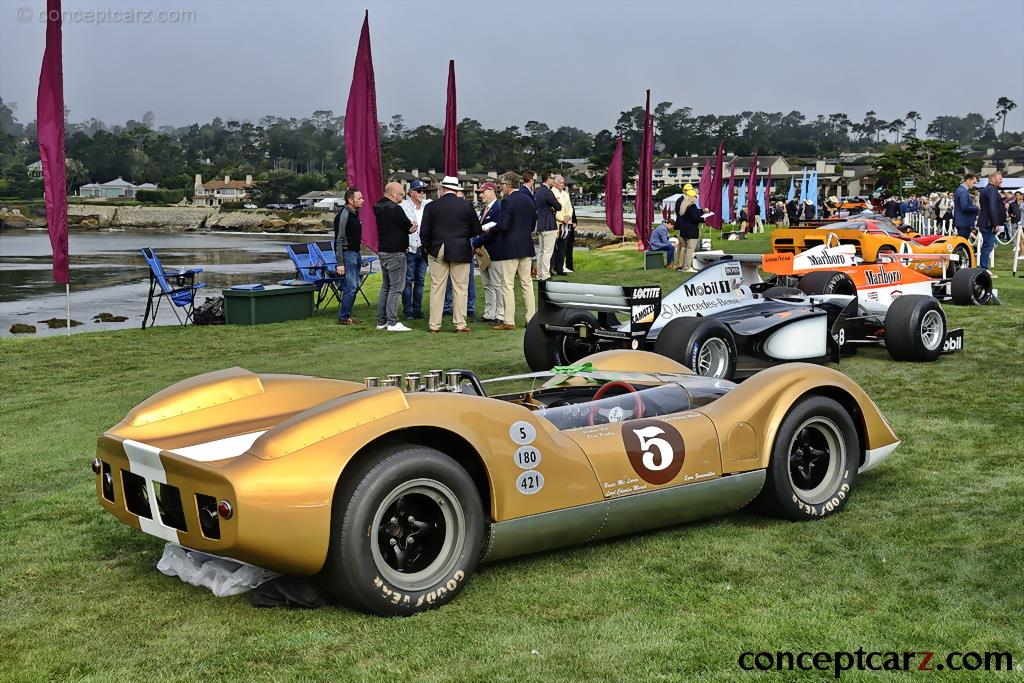
The M1A was the first car to wear the McLaren name and logo. Created by Bruce McLaren and McLaren Racing while Bruce was still driving for Cooper in Formula 1, a total of three Works examples and 24 customer cars were built. The example shown at Pebble Beach was the very first McLaren customer car. After being displayed at the 1965 London Show, it was sold to John Coombs, who fielded it for Graham Hill at Silverstone, and then it passed to Jerry Entin, who raced it at Riverside that same year. In 1966, it made its movie debut in Spinout, with Elvis Presley at the wheel.

The judge's favorite was the 1967 McLaren M6A Can-Am Race Car owned by Richard Griot of Tacoma, Washington. It is the original team car that Bruce McLaren drove to the 1967 CanAm Championship, and the car that began Team McLaren's dominance of the CanAm series for the next five years. It is one of the most significant cars in McLaren's history and would give the world a clear glimpse of McLaren's potential as a race car constructor.
Second in class was awarded to the 1988 McLaren MP4/4-2 Formula 1 Race Car owned by Mouse Motors of Chicago, Illinois. The MP4/4 is one of Formula One's brightest stars; driven by racing greats Ayrton Senna and Alain Prost, the MP4/4 won all but one race (a total of 15 out of 16 races), and it even took all but one pole. McLaren won the Constructor's Championship, of course, with a record 199 points, and Senna took home his first F1 World Driver's Championship in the McLaren. The car shown at Pebble Beach was driven by both Senna and Prost and recorded three wins.
Lamborghini - The Man & the Marque
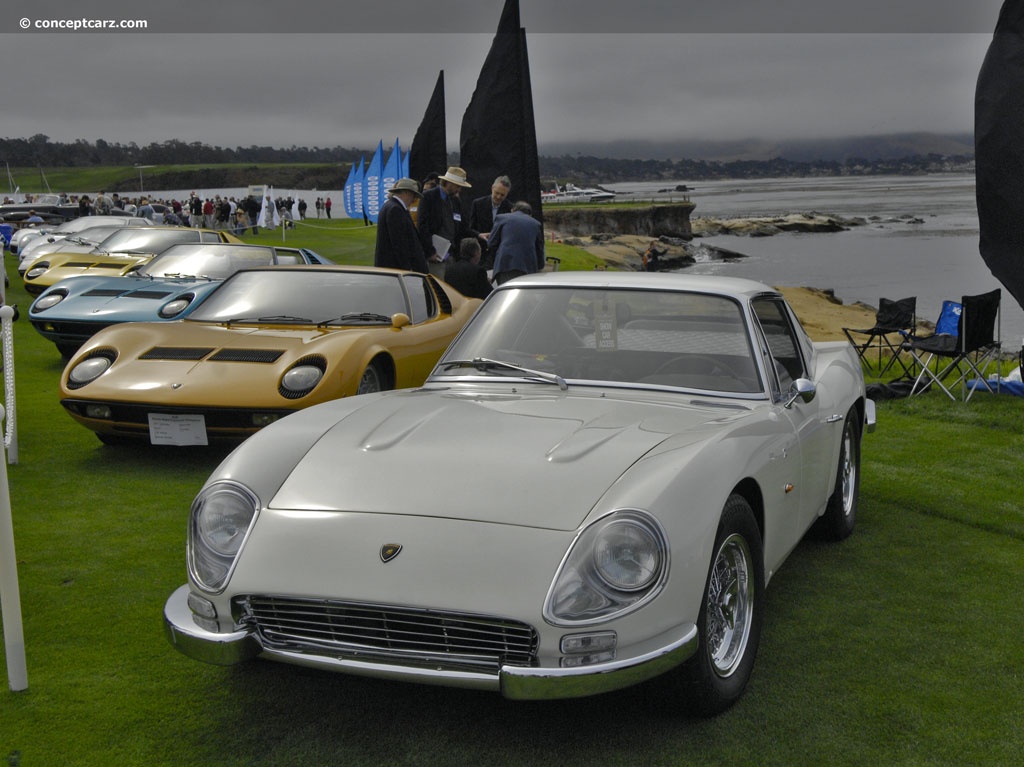
Italian millionaire Ferruccio Lamborghini decided to build his own sports car because of his dissatisfaction with his Ferrari and the company's failure to address his complaints. Following the prototype 350GTV, Lamborghini's first production car was a two-seater named the 350GT with a top speed of more than 150 mph. About 120 350GT coupes were built. Carrozzeria Zagato was the first coachbuilder to exhibit a derivative of the 350GT - the 3500GTZ. Like Zagato's previous creations, the Ercole Spada-designed 3500GTZ was streamlined and lightweight, with form following function. Built on a shortened 350 GT chassis, the coupe was first shown at the 1965 London Motor Show and then went on to star at the Paris Auto Salon a few weeks later.
The 3500GTZ shown at Pebble Beach was the most senior Lamborghini on the field. The most junior example in this class was the 1994 Lamborghini Diablo SE30 owned by Robert Cleary of Elmira, New York. The SE30 was a special edition built to commemorate 30 years of the Lamborghini brand, with magnesium wheels, Lexan windows, and carbon fiber throughout. The example shown at Pebble Beach wore a one-off color combination of Blue over Blue.
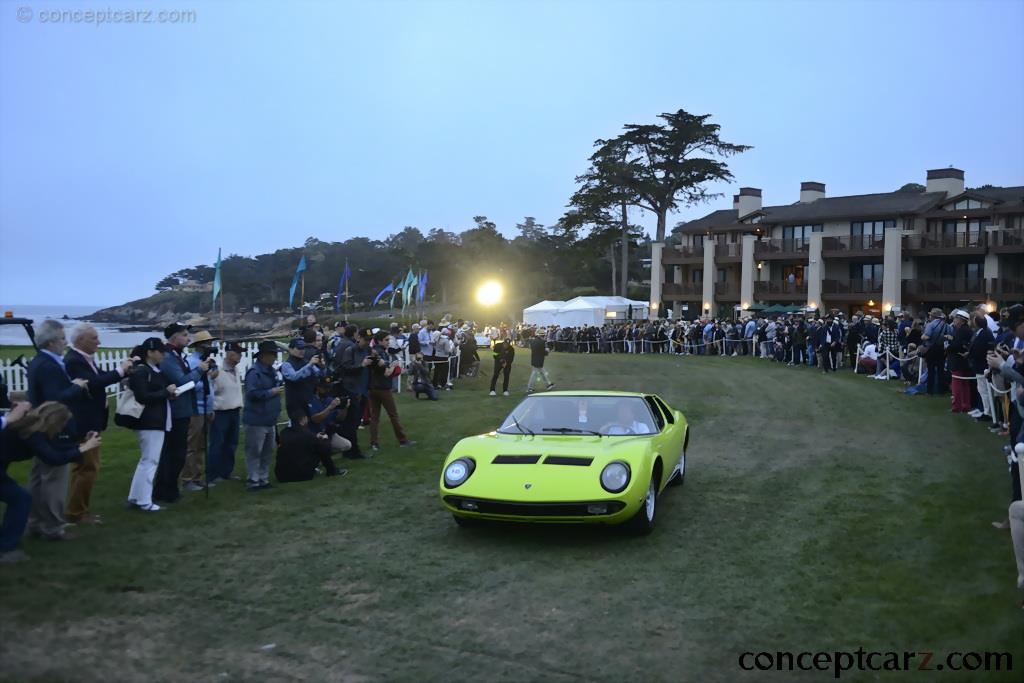
The example selected by the judges as the most deserving of first in class honors was bestowed upon a 1968 Lamborghini Miura P400 Bertone Coupé owned by Raphael Gabay of Philadelphia, Pennsylvania. The Lamborghini Miura appeared in early 1966 as a prototype and set the automobile world upside down. The engine was positioned transversely just behind the passenger compartment, a departure from previous Lamborghini cars. The V12 was also unusual in that it was effectively merged with the transmission and differential, reflecting a lack of space in the tightly-wrapped design. Bertone developed the styling of the prototype, which was finished just days before its debut at the 1966 Geneva Motor Show. Production of the Miura sports car continued through 1973, and it is widely considered to have instigated the trend of high-performance, two-seater, mid-engine sport cars. At launch, it was the fastest production car available.
Best of Show
At the end of the day, four very strong contenders were considered for Best of Show honors. The list included the Auriga Collection's 1930 Mercedes-Benz 710 SS Special Roadster, the 1932 Alfa Romeo 8C 2300 Corto Figoni Cabriolet shown care of Gregor Fisken, the 1939 Delahaye 165 Figoni et Falaschi Cabriolet owned by the Peter Mullin Automotive Museum Foundation, and the 1937 Mercedes-Benz 540K Special Roadster owned by The Patterson Collection of Louisville, Kentucky.

When the votes were tallied, it was the Mercedes-Benz 540K that was awarded top honors, and is one of three 540K Long-Tail Special Roadsters with covered spare surviving in the world today. Its coachwork was crafted by the factory's in-house coachworks, Sindelfingen of Germany, which conceived this glorious 'long-tail, high-door' bodywork with flamboyant sweeping lines, skirted fenders, and a covered spare cached into the rear deck-lid. The 540K was first delivered to King Mohammed Zahir Shah of Afghanistan, in Kabul, in September 1937, when he was just 23. It was stored at the Afghan embassy in Paris during World War II, and then gifted to the King's son-in-law, who drove it around London until the early 1950s. In 1953, the Roadster emigrated to the United States. The Patterson Collection purchased the car in 2022.
Charity
The Pebble Beach Concours raised more than $2.68 million for charity this year, bringing the event's total charitable donations to over $37 million to date. Through the Pebble Beach Company Foundation, the primary charitable partner of the Concours, these funds will benefit more than 90 local charities, impacting the lives of more than 10,000 children annually in Monterey County.
3rd Pebble Beach Concours d'Elegance
The 73rd Pebble Beach Concours d'Elegance will take place on Sunday, August 18, 2024, and will celebrate the marques of Packard and Maserati as well as the creations of Italian coachbuilder Pietro Frua—with more features to be announced in the early fall. For more information on the Pebble Beach Concours visit www.pebblebeachconcours.net.